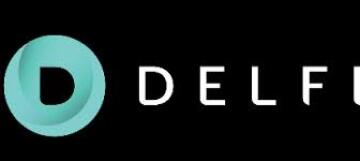Q&A: Helping Operators To Optimize Production From Complex Shale Reservoirs
For shale operators, midstream companies, and gathering network or saltwater distribution network owners, it can be difficult to uncover how to get the most production and overcome operational challenges in the field. Schlumberger’s Serdar Atmaca, Business Development Manager – Digital Ops Solutions, and Nicolas Gomez Bustamante, Principal Production Engineer – Digital Ops Solutions, explain how the Shale Production Optimizer empowers engineers to quickly identify the right strategies for a given well or pad.
What challenges are North American operators facing when it comes to producing from shale?
Serdar Atmaca (SA): Shale reservoirs are complex. What kind of artificial lift is best? What does the pipeline network look like? Operators need to figure all of this out to produce in an economical fashion, but that’s exactly the problem: There hasn’t been a cost-effective, easy-to-use option.
Nicolas Gomez Bustamante (NGB): Operators are also feeling the same squeeze that we all are. They’re having to do more and achieve better production rates with fewer people on staff. That means that most operators simply don’t have the resources or the bandwidth to devote an employee to working on data, analytics, or new software.
How do these challenges adversely affect shale production?
SA: Due to this combination of factors, we often see North American operators choosing to make educated guesses in the field. Based on past experiences, they go with the strategy that has historically worked and hope for the best. But because these decisions are based on trends rather than advanced analysis, they can result in sub-optimal well production.
Where does the Shale Production Optimizer fit in?
NGB: The Shale Production Optimizer pulls the most popular shale-specific workflows from the PIPESIM steady-state multiphase flow simulator into a distinct offering, available by monthly subscription. Having the most popular workflows means it’s more cost-effective for our customers, and it’s less overwhelming for new users to navigate.
SA: We specifically designed the Shale Production Optimizer to be easy to use. Our customers had always assumed that they need to spend a huge amount of time and effort upfront to learn how to perform this kind of analysis. But the interface is so intuitive that even if this is your first time using it, you can still build a well model and enter key parameters, because the program tells you exactly what data is needed for the workflow to be completed.
What are some of the most popular ways to use the Shale Production Optimizer?
SA: The most common use is for well design, to understand well capacity and what the limitations are. Having a good design means the well will produce as expected, and that results in greater confidence and control at the well level and the pad level. We also see customers running different artificial lift techniques and optimization scenarios to see their effect on well performance, identifying bottlenecks in the network, and evaluating corrosion at the network level.
NGB: Some of our customers have even developed their own capabilities using Python to extend workflows beyond those that exist within the application. There’s also the possibility of adding additional tools to your subscription to help with forecasting field operations, and overcoming design limitations and mitigation plans going forward.
What other additional benefits does the Shale Production Optimizer offer?
SA: Besides the advantages we outlined already, I think one of the best parts of this offering is that we have such an active community of PIPESIM users. There’s a YouTube channel for PIPESIM that shows users additional features and functionality within the platform. We also host user group meetings, where we invite our PIPESIM users to come see demos of the latest version, learn from case studies, show off their own analysis, or present new workflows.
What does a customer need in order to use Shale Production Optimizer?
NGB: It’s pretty easy. All you need is some data, an internet connection, and a subscription. Operators can sign up with a credit card online and be up and running within a few days. For any questions as they’re getting started, operators can reach out to our local and global support teams.
For more information on the Shale Production Optimizer and other production cloud-based software options, click here.



